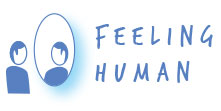Shiatsu

What is Shiatsu?
Shiatsu is a physical therapy that supports and strengthens the body’s natural ability to heal and balance itself. It works on the whole person – not just with the physical body, but also with the psychological, emotional and spiritual aspects of being.
Shiatsu originated in Japan from traditional Chinese medicine, with influences from more recent Western therapies. Although shiatsu means ‘finger pressure’ in Japanese, in practice a practitioner uses touch, comfortable pressure and manipulative techniques to adjust the body’s physical structure and balance its energy flow. It is a deeply relaxing experience and regular treatments can alleviate stress and illness and maintain health and well-being.
How does Shiatsu treatment work?
Based on the initial diagnosis and on physical and visual feedback gained during the session, the practitioner will seek to even out the perceived energy imbalances through pressure on the meridians, probably in conjunction with other techniques such as rocking, stretches and joint rotations.
As with diagnosis, Shiatsu treatment is holistic, with the practitioner working on the whole body rather than focusing on the area where symptoms are most obvious. Shiatsu works best if the client is as relaxed and comfortable as possible, so you should close your eyes, relax your muscles (the practitioner will do all the work if movement is required) and refrain from speaking unless it’s really necessary. But let the practitioner know the moment you feel any discomfort or your body will start to tense up and the benefit of the session will be lost.
“(After a Shiatsu with Ian) I’m utterly relaxed and feel rooted to the mattress. I can’t remember the last time I was this chilled out..”
– Kathleen Manson Health journalist, Evening Times
